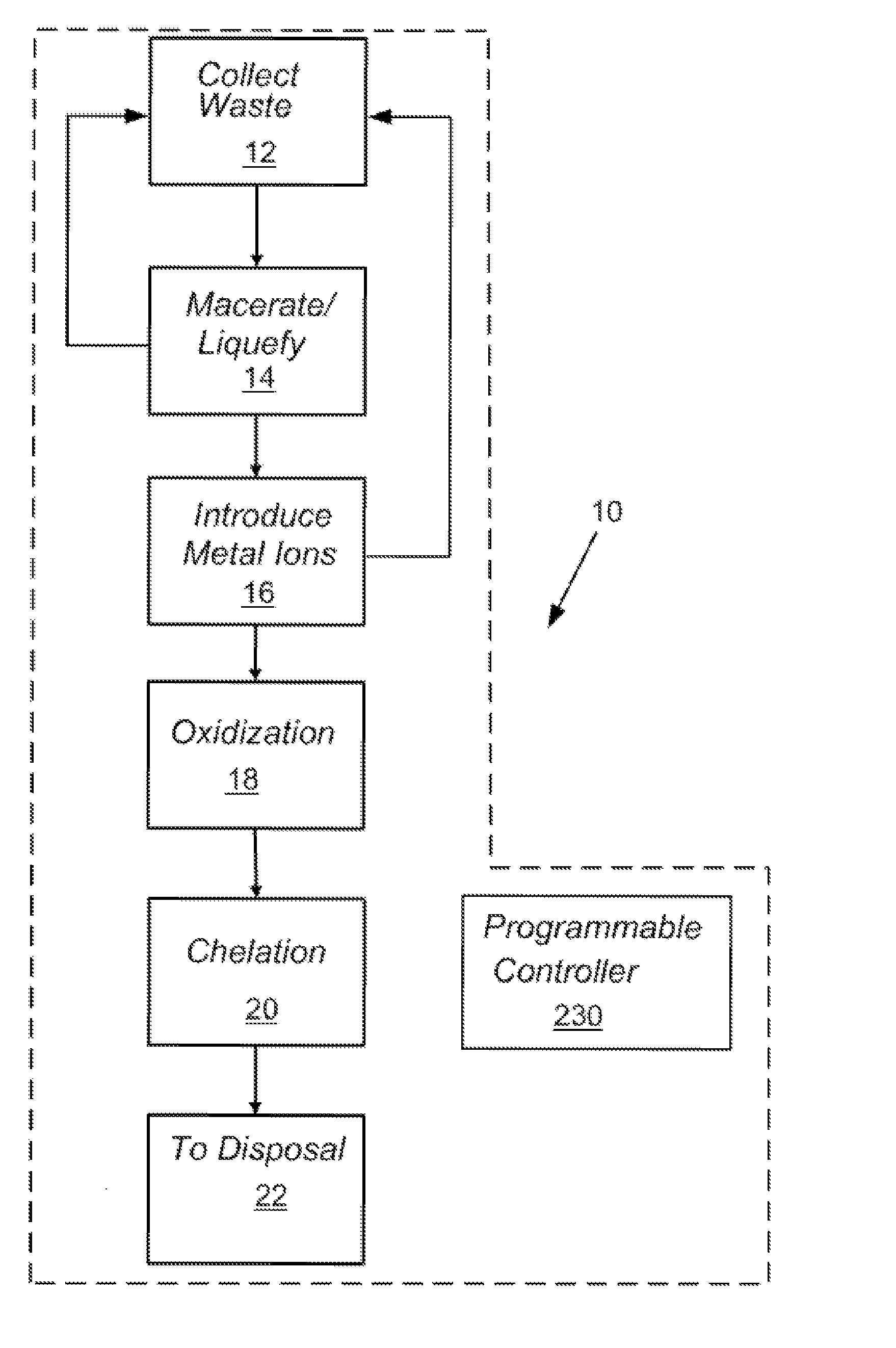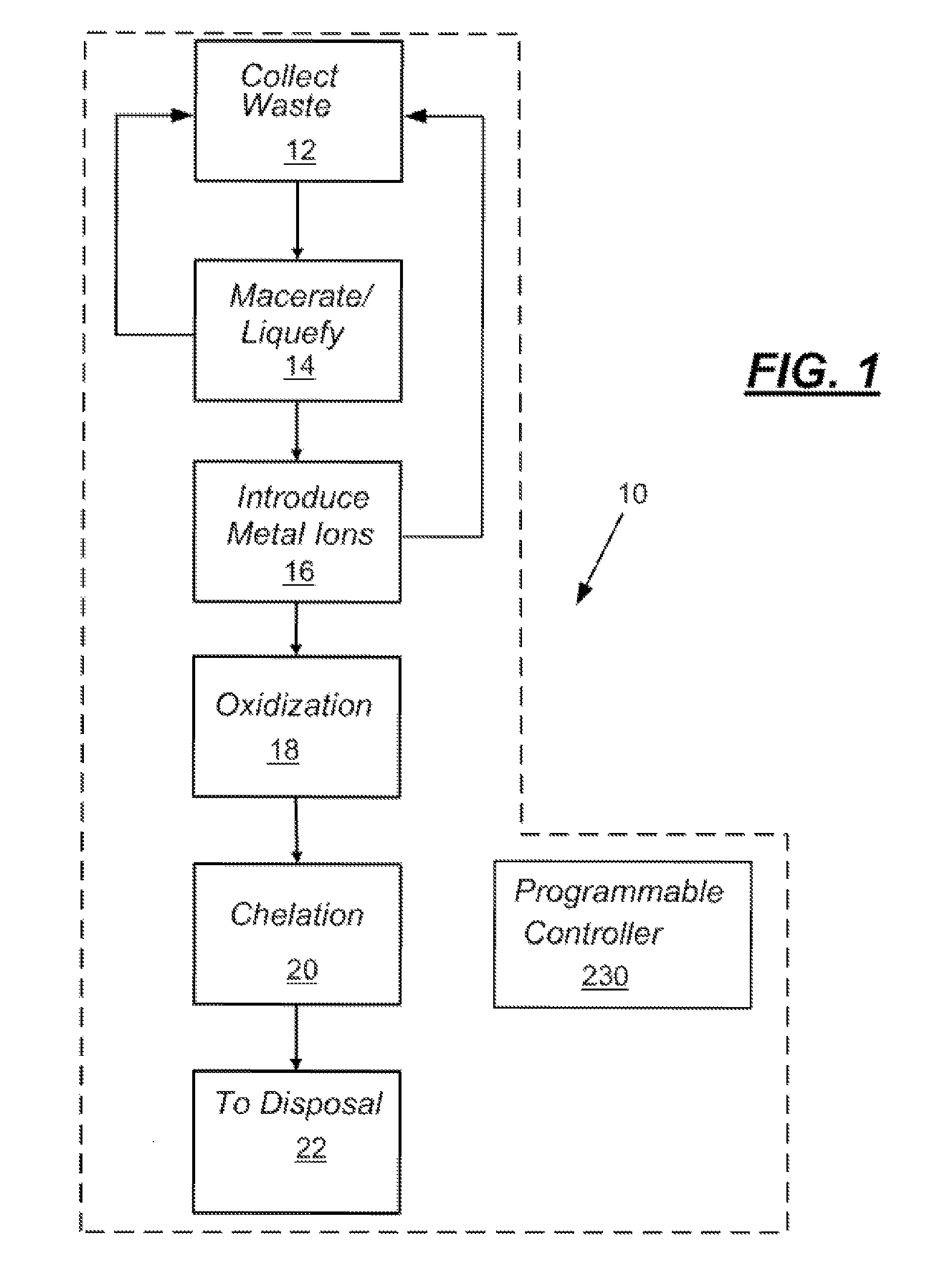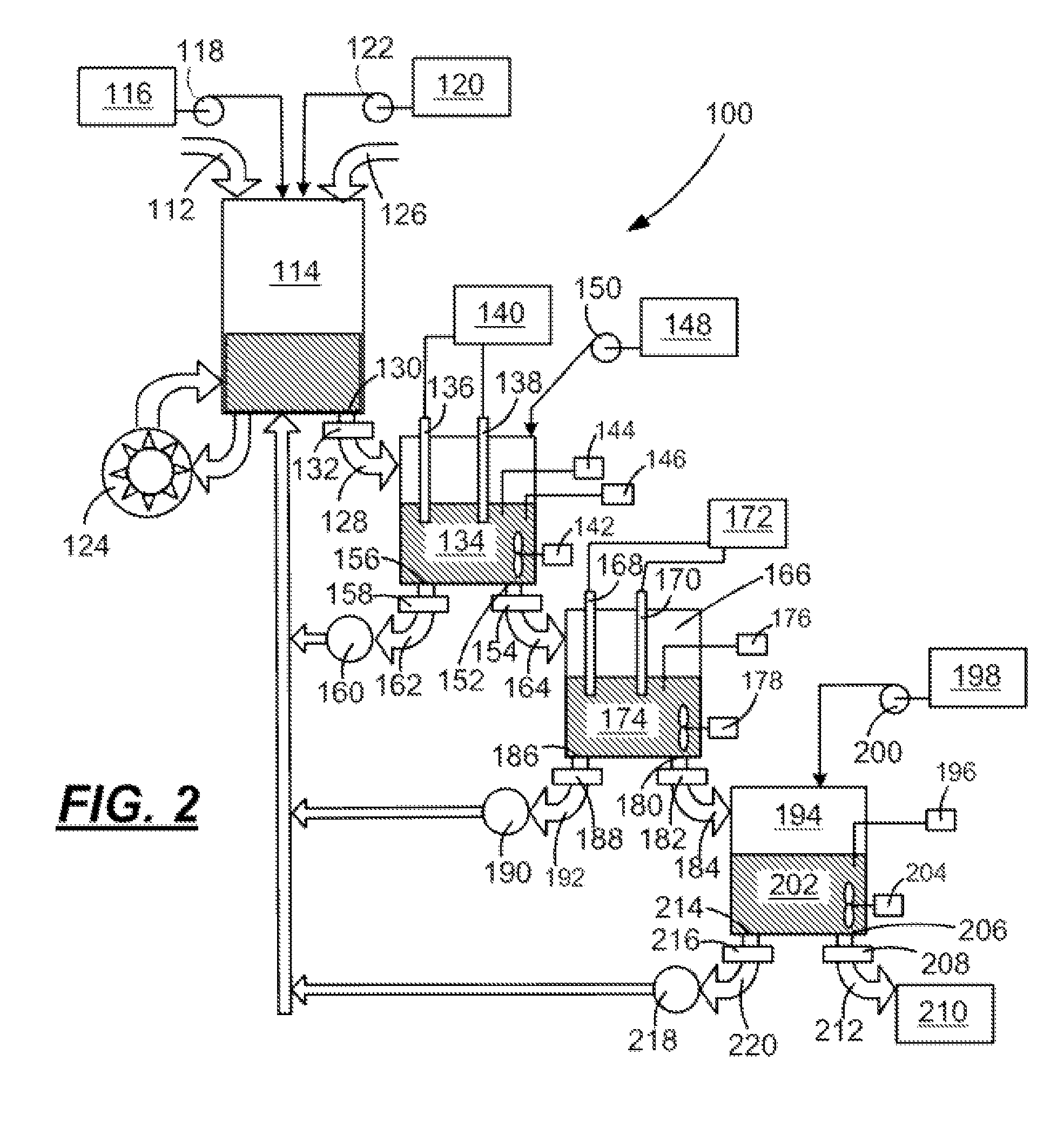In-line waste disinfection method
a waste and waste technology, applied in the field of in-line waste and/or modular waste disinfection units, can solve the problems of insufficient treatment of biological infectious waste streams from hospitals, slaughterhouses, other sources that may contain biologically hazardous or toxic components, and large municipal treatment facilities that cannot adequately be configured for high concentrations of biological materials originating in hospitals and other sources, so as to reduce the degree of infectivity of materials and be ready to be deployed.
- Summary
- Abstract
- Description
- Claims
- Application Information
AI Technical Summary
Benefits of technology
Problems solved by technology
Method used
Image
Examples
Embodiment Construction
[0014]As described in more detail below, embodiments of the present disclosure may provide systems and methods for disinfecting substantially liquid infectious waste streams before discharging the waste streams to a sanitary sewer system or directly to the environment. The deactivation or destruction of infectious agents, such as viruses, bacteria, protists, fungi, algae, prions, or other infectious organic matter, through embodiments of the present disclosure may be herein referred to as “disinfection” or “biocidal activity.” The systems and methods may be adaptable to being portable or to being permanently attached to existing sanitary sewer drains. Each system may be substantially self-contained so that fluid discharged from the system may be suitable to flow into an existing sanitary sewer or directly to the environment without further disinfection.
[0015]The systems and methods of the present disclosure may generate reactive disinfection agents in situ during the course of opera...
PUM
| Property | Measurement | Unit |
|---|---|---|
| diameter | aaaaa | aaaaa |
| particle size | aaaaa | aaaaa |
| diameter | aaaaa | aaaaa |
Abstract
Description
Claims
Application Information
 Login to View More
Login to View More - R&D
- Intellectual Property
- Life Sciences
- Materials
- Tech Scout
- Unparalleled Data Quality
- Higher Quality Content
- 60% Fewer Hallucinations
Browse by: Latest US Patents, China's latest patents, Technical Efficacy Thesaurus, Application Domain, Technology Topic, Popular Technical Reports.
© 2025 PatSnap. All rights reserved.Legal|Privacy policy|Modern Slavery Act Transparency Statement|Sitemap|About US| Contact US: help@patsnap.com



